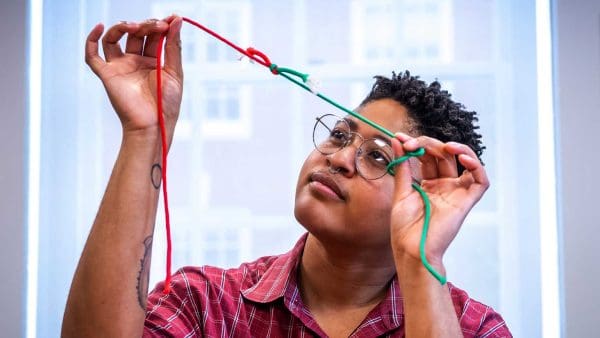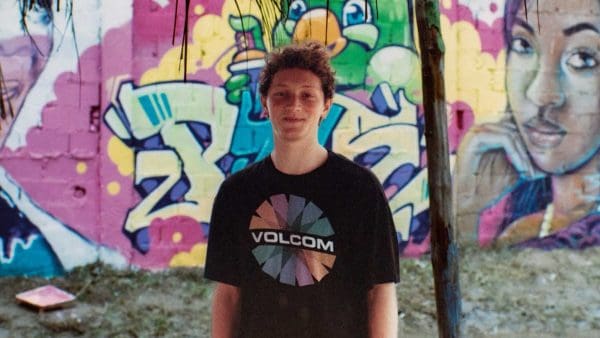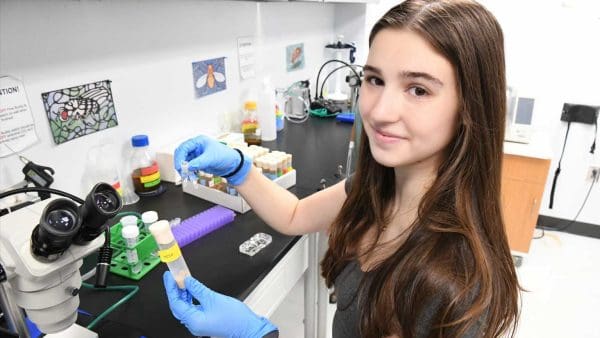Writing Seminars major Kylie Sharkey ’16 explores the next big thing in academic and cultured circles: the digital humanities.
When Sylvester Stallone as Rocky ran up the Philadelphia Museum of Art’s East Terrace steps, he gave the world one of its iconic movie scenes. With his gray tracksuit and arms stretched over his head, it was clear that he had conquered something, become someone, and reached the unreachable. This moment of humble triumph took place on the elitist steps of the museum. Rocky did not belong among the art of Picasso and Eakins. But still he ran and took ownership of the golden beacon on the Parkway. As an intern this summer in the museum’s Development Department, I was able to watch crowds of people re-create Rocky’s run each day. But only a small segment of these runners would actually venture inside the institution.
The facades of Johns Hopkins and the Philadelphia Museum of Art appear wildly different at first glance. The museum’s yellow Minnesotan dolomite glows in the late afternoon sun. Its sculpture-adorned pediments and soaring columns radiate. While Hopkins’ Federal-style architecture may be less overt, its red brick and white marble speak clearly to an intellectual and inherently elitist past. Despite appearances, both campuses are open to the public and are full of people committed to sharing knowledge and resources. Anyone can walk Hopkins’ expansive brick paths. Anyone can run up the iconic “Rocky” steps. However, it remains challenging to get people to interact with the treasures inside the institutions, be they items in the Sheridan Libraries and University Museums at Hopkins or the Philadelphia Museum’s expansive collections. But in our digital age, the perceived barriers of inaccessibility are beginning to be challenged.
One day when I was working at the museum last summer, an email popped up with the subject NEW ON THE WEB. The email referred to Art 24/7, an ongoing effort to digitize the museum’s more than 227,000 works. Before the Internet, every stunning piece, from Van Gogh’s Sunflowers to the horse armor of Duke Ulrich of Württemberg, was resigned to live only within the museum’s walls or in glossy print. But with the opening of a digital realm, museum objects have been given new life. Cézanne can now be viewed alongside an open Facebook tab, and Duchamp can be pasted into a term paper. But this process hasn’t happened overnight. Each object had to be painstakingly photographed and its data transferred from archaic note cards to digital databases. Currently, despite years of hard work, the public can electronically search for just 80,591 pieces out of more than 200,000. This monumental task takes time and, more troublingly, money. But the institution is devoted to the cause. It has become clear that there is a home for art beyond the physicality of a gallery—and this digital home bypasses architectural features steeped in exclusivity.
Gabrielle Dean, my professor at Hopkins for a course I took called The Library and the Laboratory, was constantly urging our class to think of the library’s role and appearance in the future. With the emergence of digital reading tablets and expansive online databases, our musings would often take the library out of its physical space and into the digital world. Members of our class, including me, wrote a regular blog, which helped promote this forward-thinking trend. Our class’ work and ideas could be presented to the public without many of the barriers of access surrounding the actual library. While few people were curled up on their couches at home reading our thoughts about ancient manuscripts, the idea is that they could. The humanities are being digitized, and it is opening a new avenue of access. Luckily, and unexpectedly, I have found that both my academic and vocational worlds put me at the threshold of this emerging trend.
The Philadelphia Museum of Art is taking a note from Rocky himself as it looks to triumph over its image as an inaccessible institution by giving its collections new life on the Web, where the public can view them most easily. Johns Hopkins is following suit as professors push for materials to be placed online and as research resources are increasingly digital rather than physical. The grand and often intimidating architecture of the past is being put into conversation with the digital architecture of our future. As this shift occurs one thing is clear—information is being housed in new ways. So please, do come inside, there is so much to show you.




